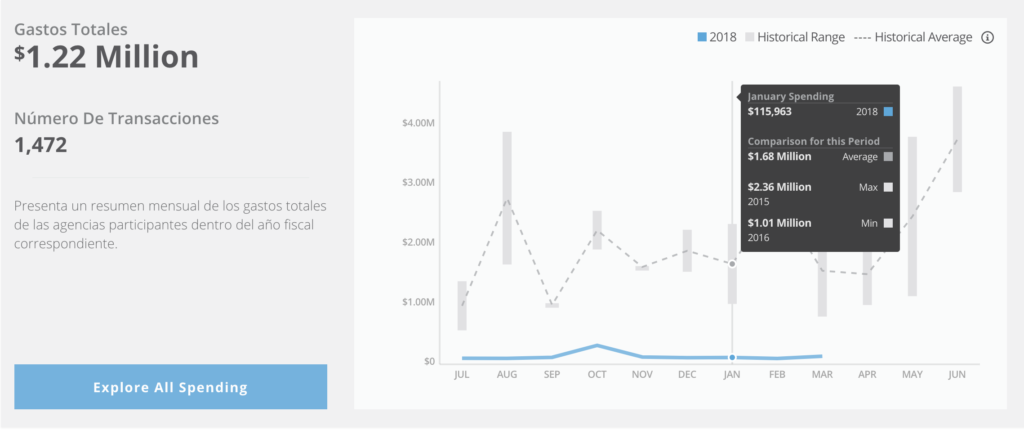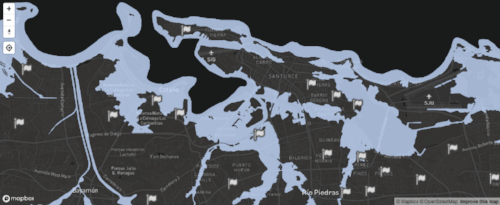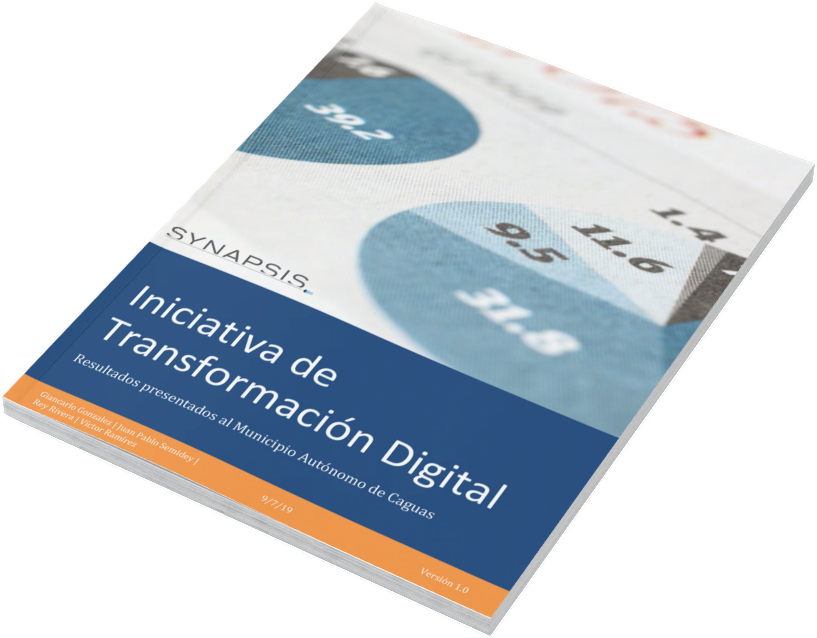Instituto de Estadísticas ¿para qué?
Para lograr reformas institucionales en todo el gobierno en la era digital, hay tres pilares principales que deben estar en sintonía entre todas las dependencias:
- Data – refiérase al manejo de data
- Digital – refiérase al desarrollo de aplicaciones y programas
- Tecnología – refiérase a la infraestructura donde residen los datos y aplicaciones
Este modelo tuvo su inicio en el Reino Unido luego de repetidos fracasos y despilfarros tecnológicos. No obstante, tras su éxito, se ha convertido en la norma a nivel mundial. Delegaciones de sobre 250 países han visitado las facilidades de Gov.UK en el Reino Unido para estudiar el modelo y llevarlo a sus respectivos países. Puerto Rico no quedó fuera, pues como parte de la serie de conversatorios Dear Fiscal Board, representantes de Gov.UK estuvieron en la Isla conversando con nuestros líderes.
- Tom Loosemore from Gov.UK presents on digital strategy
- Dear Fiscal Board audience of government and private sector leaders.
- Natalie Jaresko reacts to Tom Loosemore’s presentation
- Tom Loosemore meets with Governor Rossello and CIO Luis Arocho
La gestión que realizo, como profesional y ciudadano, me ha permitido observar gobiernos y jurisdicciones de todas partes del mundo. En este ejercicio ha sido evidente la necesidad de integrar los esfuerzos de transformación digital, manejo de datos y reforma tecnológica en una sola entidad. Ello para enfocar los trabajos en la necesidad de los usuarios y no en las preferencias de las diferentes agencias y departamentos y sus respectivas interpretaciones legales de lo que es o no es posible.
Como ejemplo reciente, en Canadá, Justin Trudeau unificó estas responsabilidades bajo el Canadian Digital Service y le otorgó los recursos necesarios, provistos por el ministerio de finanzas. La persona seleccionada para dirigir este departamento es Aaron Snow. Snow estructuró y dirigió la entidad a cargo de ejecutar proyectos digitales en el Gobierno Federal, llamada 18f, adscrita a Servicios Generales, durante la administración de Obama. Precisamente, Aaron participó del conversatorio Dear Fiscal Board en noviembre 2017 en Washington DC, junto a Carlos Mercader y Shelly Ni.
-
En la foto de izq a derecha luego de este servidor: Shelly Ni de NAVA, Aaron Snow, ahora Chief Digital Officer de Canada, y Carlos Mercader, director de PRFAA
En Puerto Rico existe el Puerto Rico Innovation Technology Service (PRITS) pero no cuenta con la autoridad ni los recursos necesarios para llevar a cabo sus funciones de manera efectiva. Pueden impactar en los pilares de Digital y Tecnología de manera limitada. Sin embargo, un adelanto reciente es la inclusión del organismo en el plan fiscal donde se señala la asignación de recursos y la autoridad para poder llevar a cabo sus funciones.
De igual manera, el Instituto de Estadísticas está capacitado para manejar el pilar de Data. En este caso, no se trata de ninguna agencia o departamento, sino de cómo el gobierno colabora entre sí mismo. El instituto mantiene el portal de datos data.pr.gov, una plataforma de calibre mundial para facilitar el trabajo de recolectar y difundir los datos del gobierno de manera íntegra y accesible. Recientemente, el Instituto dio un paso de avanzada haciendo sus finanzas públicas en transparenciafinanciera.pr.
 En la actualidad, tanto el Gobierno como la Junta de Control Fiscal, gastan cientos de millones en consultores para producir informes intercambiándose hojas en excel. Peor aún, en muchos casos la procedencia e integridad de esos archivos es cuestionable. El Instituto de Estadísticas no solo ha mantenido estos portales para facilitar intercambio de datos, sino que está en proceso de correr dos sistemas paralelos para eventualmente migrar a una tecnología menos costosa.
En la actualidad, tanto el Gobierno como la Junta de Control Fiscal, gastan cientos de millones en consultores para producir informes intercambiándose hojas en excel. Peor aún, en muchos casos la procedencia e integridad de esos archivos es cuestionable. El Instituto de Estadísticas no solo ha mantenido estos portales para facilitar intercambio de datos, sino que está en proceso de correr dos sistemas paralelos para eventualmente migrar a una tecnología menos costosa.
Un ejemplo de la utilidad de estos portales ocurrió durante el segundo conversatorio de la serie Dear Fiscal Board, pautado para el 6 de septiembre de 2017 pero que se llevó a cabo el ocho por el paso de Irma. Junto a los oradores invitados, Dan Sheldon de Gov.UK y Maksim Perchersky, Chief Data Officer de San Diego, desarrollamos una aplicación para localizar refugios y delinear zonas inundables. Escribí sobre esto aquí.
Para lograr publicar los refugios requirió poder encontrar los datos de las escuelas, y resultó que el repositorio más accesible para dicha información era el portal de data custodiado por el Instituto. Aquí hay una lección que comuniqué en mi testimonio ante la Junta: Si el gobierno provee plataformas de manejo de datos y transacciones, la comunidad tecnológica y el sector privado pueden innovar fácilmente para difundir información y mejorar servicios. Esto puede salvar vidas.
Sin duda alguna, los pilares de data, digital y tecnología son multidisciplinarios, requieren un equipo con experiencia en diseño de servicio, programación, sistemas y estadísticas. Estoy seguro que si sacan la política partidista del medio, PRITS y el Instituto encontrarán formas de colaborar sin tener que reinventar una rueda que seguramente será necesaria si eliminan el Instituto pero a PRITS se le otorga el poder en ley según estipulado en el Plan Fiscal.
El Instituto evolucionó de decirle a las agencias “tienes que enviarme la data” a “puedo facilitarte cómo manejas la data”. Cerrar el Instituto hará más difícil poder gestionar intercambios de datos, pero lamentablemente, a veces resulta más importante para propósitos políticos o ‘self serving’, salir de algo sobre conocer lo que tiene y cómo utilizarlo.
Eliminar la autoridad de manejo de datos al Instituto de Estadísticas y moverla sin mandato o explicación no tiene sentido. Sin duda, es un error hacer ese movimiento por conveniencia política o, como alternativa, perpetuar los juegos departamentales de consolidación de agencias. Hay una necesidad apremiante de desarrollar una política de datos, ya sea bajo el Instituto de Estadísticas o bajo PRITS, como entidad digital y custodia de datos, pero esto puede hacerse sin eliminar una estructura independiente y funcional. La gestión del Instituto ha sido probada, su rol en la identificación de indicadores importantes en nuestro País ha sido fundamental.
Cualesquiera que sean las razones de este cambio, Tom Loosemore resumió el resultado final: “El gobierno dificulta la aplicación de la política gubernamental”. Como todos los gobiernos ahora y en el futuro, se darán cuenta rápidamente que para implementar políticas en la era digital necesitarán una alineación de Data, Digital y Tecnología para poder ejecutar el plan fiscal y efectuar cambios al ritmo que los usuarios esperan ahora.
To achieve institutional reforms throughout the government in the digital era, there are three main pillars that must be in harmony among all government dependencies to properly carry out the mission:
- Data – refer to the storage, collection and usage.
- Digital – refer to the redesign of services via applications.
- Technology – refer to the infrastructure where the data and applications reside.
This model had its beginning in the United Kingdom after repeated failures and massive amount of money spent in numerous projects. After its success, it became the norm worldwide, with delegations from over 250 countries visiting the facilities of Gov.UK in the United Kingdom to study the model and take it to their respective countries. Puerto Rico was not left out, as founding members of Gov.UK talked about “digital best practices” with local leaders as part of the “Dear Fiscal Board” speaker series.
- Tom Loosemore from Gov.UK presents on digital strategy
- Dear Fiscal Board audience of government and private sector leaders.
- Natalie Jaresko reacts to Tom Loosemore’s presentation
- Tom Loosemore meets with Governor Rossello and CIO Luis Arocho
I have been closely involved with digital transformations with municipal, state and federal governments and jurisdictions from all over the world. The one constant has been the need to centralize the efforts of digital transformation, data management and technological reform in a single entity. An entity focused on the needs of the user and not on the preferences of any particular agency or departments, shielded from having to adjust to anachronous legal interpretations of what is or is not possible. As a recent example, in Canada, Justin Trudeau unified these responsibilities under the Canadian Digital Service. The person selected to lead this department is Aaron Snow, who directed 18f within the General Services Administration. 18F “collaborates with other agencies to fix technical problems, build products, and improve how government serves the public through technology.” Precisely, Aaron participated in the discussion the Dear Fiscal Board Speaker Series in Washington DC, along with Carlos Mercader, Shelly Ni as part of a panel on a digital strategy to rebuild Puerto Rico.
In Puerto Rico we have the Puerto Rico Innovation Technology Service (PRITS) created by executive order, but it does not have the legal authority nor the resources necessary to carry out its functions. There was progress on this matter with the inclusion of PRITS as part of the fiscal plan. It calls for the allocation of resources and provide proper empowerment in order to carry out its functions.
Puerto Rico also has the Statistics Institute, with legal autonomy and authority. The Institute maintains the data portal data.pr.gov, a world-class platform that facilitates the work of collecting and disseminating government data in compliance with the 10 principles of “open data”. The Institute plays a key role in sustaining the “Data” pillar and it is about to be dismantled. The truth is, it is not about any agency or department, but about how the government organizes itself in the most effective manner, and privatizing the Institute is not in the best interests of Puerto Rican citizens. The Institute has proven results, playing a fundamental role in the identification of important indicators and leading the way by providing public access to its finances through transparenciafinanciera.pr.
Currently, both the Government and the Fiscal Control Board spend hundreds of millions of dollars on consultants exchanging excel sheets to generate reports . Worse yet, in many cases the provenance and integrity of these files is questionable. During the second discussion of the Dear Fiscal Board series, scheduled for September 6, 2017 but which took place on the 8th due to the passage of Hurricane Irma, we developed an application to locate shelters and delineate flood zones. I wrote about this here.
In order to publish the shelters, it was necessary to be able to find school data. The Institute had an accessible repository for this information. Here is a lesson I shared in my testimony before the Board: If the government provides “data as a platform” the technology community and the private sector can easily innovate to provide ways to better consume this information. This can save lives.
Without a doubt, the pillars of data, digital and technology are multidisciplinary, they require a team with experience in service design, programming, systems and statistics. I am sure that if they take partisan politics out of the way, PRITS and the Statistics Institute will find ways to collaborate without having to reinvent a wheel that will surely be necessary if the Institute is dismantled but PRITS is empowered as stipulated in the Fiscal Plan. Unfortunately, politics often provide for instances where we’d rather get rid of a resource over understanding how to best utilize it. In short, we need a healthy Institute independent of government politics that can collaborate and support an empowered PRITS.
Like all governments now and in the future, they will quickly realize that to implement policies in the digital age they will need an alignment of Data, Digital and Technology to successfully execute on any fiscal plan.










1 Comment
[…] data policies by providing entities like the Puerto Rico Innovation Technology Service (PRITS) the resources it needs to carry out its functions. Finally, desist from dismantling the Puerto Rico Institute of Statistics (PRIS). The recent events […]